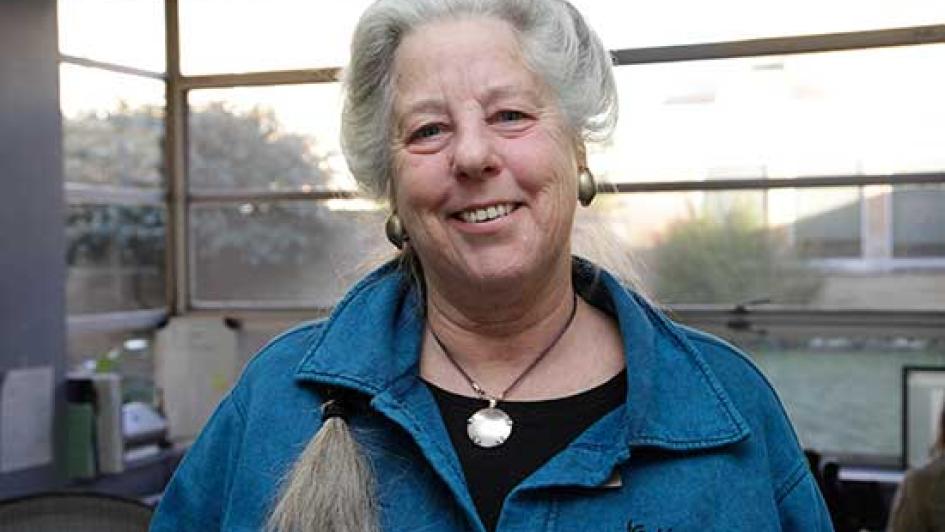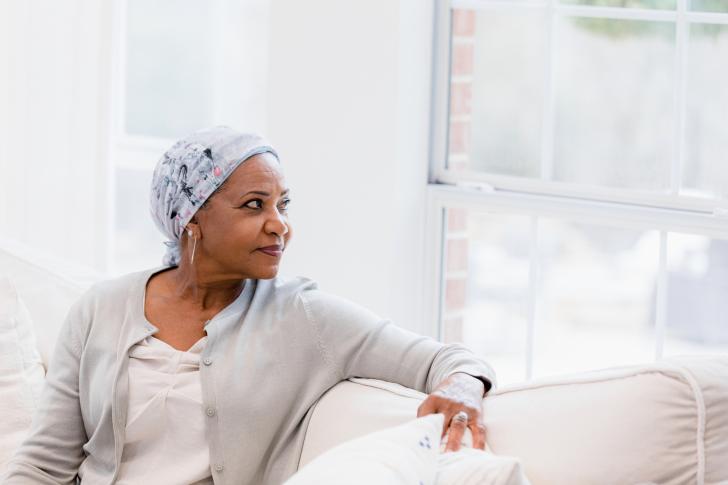Bastyr Leads Innovation in Cancer Treatment and Prevention

Published
“These are not theoretical findings,” stresses Leanna Standish, PhD, ND, LAc, FABNO, professor at the Bastyr University Research Institute. “This is not wishful thinking. I’m interested in prescribing therapy that works.”
Her conviction lends an air of urgency to an already serious conversation about integrative oncology research at Bastyr.
Dr. Standish is a veteran neuroscientist and naturopathic oncologist. Her intellectual curiosity and unwavering reliance on facts and results is typical of researchers at Bastyr University, but the totality of her research work with cancer and cancer treatments is remarkable in both its depth and breadth.
Most recently, it has included the study of turkey tail mushrooms in the treatment of breast and prostate cancer (in partnership with the University of Washington); functional brain imaging in the treatment of brain cancer; and the development of integrative oncology outcomes studies. She is also developing new research studies using intravenous Resveratrol and intravenous curcumin and studying the effects of an IV therapy that uses ascorbic acid with artemisinin, a medicine derived from wormwood (a plant used in traditional Chinese medicine).
Dr. Standish is constantly scanning the globe for innovative tools to bring to the fight against cancer, including the study of bioactive components from the South American ayahuasca vine. “I feel an obligation to learn everything I possibly can from medicines all over the world to bring to the bedside.”
What is integrative oncology?
Integrative oncology offers comprehensive support for each stage of a cancer patient’s experience — from diagnosis to treatment decisions, and restoration of immune function and health after completion of standard treatments. Patients receive care from not only conventional medical doctors, but also licensed, board-certified naturopathic oncologists, as well as nutritionists and acupuncturists, all of whom have advanced oncology training.
“Integrative oncology is an emerging field within oncology,” Dr. Standish explains. “It brings the best of complementary and alternative medicine (CAM) into the care of patients with cancer, who are also receiving conventional medicine.”
Integrative oncology has its own international professional societies, journals, textbooks and board certification. Work in integrative oncology has also been funded on the federal level, by the National Cancer Institute and the National Institutes of Health’s National Center for Complementary and Integrative Health.
Integrative Oncology Research at Bastyr
The Bastyr Integrative Oncology Research Center began recruiting oncology patients in 2009 to participate in the Bastyr Integrative Oncology Outcomes Study (BOS), an observational research study. In simple terms, it’s a database containing data from more than 650 cancer patients that, according to Dr. Standish, “allows us to measure survival rates, recurrence rates and the types of integrative oncology therapies used.”
Bastyr’s oncology center also completed a National Institutes of Health-supported epidemiological study of breast cancer patients in partnership with Fred Hutchinson Cancer Research Center, and has been measuring the effectiveness of integrative oncology for women with breast cancer since 2010. Although no longer recruiting participants, funding from a private foundation supports on-going data collection and analysis for this study.
Bringing Together Integrative Oncology and Conventional Primary Care
The idea of using conventional oncological treatments and also using CAM, together, comes up repeatedly during a discussion of integrative oncology. Nowhere is CAM used in lieu of conventional treatments, but rather as an accompaniment. “We work very hard to move some patients toward the idea of getting good primary, regular, usual oncology care. What we do is help patients maximize the benefit of their chemotherapy (or other conventional treatment) with natural medicine.”
Skeptics may have, in the past, worried about a delay in treatment presented by the introduction of CAM. “We looked at this,” says Dr. Standish. “If CAM was used, we asked whether there was any delay in starting conventional therapy. And we found that the answer was ‘no.’ There was absolutely no delay. We also found that integrative oncology patients received similar standard oncologic care as usual care patients.”
Integrative oncology empowers both naturopathic and allopathic doctors with strategies to use CAM to custom-tailor treatment for patients. When facing something as overwhelming as a cancer diagnosis, it can help to dial in on the specificity of issues a patient is experiencing. “We can use natural medicine modalities, such as acupuncture, physical medicine, nutrition, for specific problems,” says Dr. Standish.
“Let’s say we have a patient with breast cancer who is going to have surgery next week,” she further explains. “The first thing we do is make sure she’s not taking anything that’s going to prevent blood clotting. Then, when her surgery is done, we can help her tolerate the side effects of chemotherapy with an amino acid called glutamine. We may give her melatonin to help her sleep better at night, and as an immune therapy. We may give her acupuncture to help with fatigue. And then we can use certain botanical medicines, such as curcumin or quercetin, to help prevent cancer from coming back. There’s a tremendous amount of research that shows these plant medicines have targeted effects.”
These are all measures that not only treat the disease, but the whole person. Of particular interest to the research team is the effect of integrative oncology on quality of life, both during and after treatment. “A big part of integrative oncology is addressing the mind-body state — we teach people how to meditate, which is a very important tool, especially if you’re going through something scary,” says Dr. Standish.
CAM treatments can often simply help a patient feel better, and natural medicine has proven especially effective in easing patients’ side effects during conventional treatments such as surgery, chemotherapy, or radiation. “There is a lot of communication with the conventional cancer teams,” says Dr. Standish. “We are applying CAM at the appropriate time with the appropriate patients and getting the maximum benefit of conventional oncology, while reducing its side effects.”
The Diagnosis
Dr. Standish is all too personally familiar with the anguish of a cancer diagnosis, having repeatedly experienced traumatic cancers in her family. She knows exactly what that fear is like.
“When people are first diagnosed with cancer, it is really frightening. It’s frightening for the person and for the family. People deal with two fears when they are diagnosed with cancer,” Standish explains. “One: ‘Am I going to die of cancer, or of my treatment for my cancer?’ And, two: ‘Is my cancer going to come back?’”
Part of a more integrative approach to cancer treatment is addressing these fears. An emphasis on a patient’s emotional and spiritual well-being is part of the process from day one. “During a frightening first diagnosis, what we do is to help people make good decisions,” she says. Those good decisions are informed with, and driven by, the hard science and outcomes demonstrated by the research work happening at Bastyr. “It’s the data we collect that is, in the end, going to provide patients with real confidence and security.”
Prevention and Fighting Recurrence
Dr. Standish also has a tremendous interest in alleviating that second great fear people often experience upon diagnosis: recurrence. “One of the most important things we do is to help people prevent the recurrence of cancer.” Prevention is one of the primary things that distinguishes integrative oncology, and is a hallmark of naturopathic medicine. Fighting against recurrence is of the utmost importance in her work and the objective of multiple studies.
The preventive measures producing the most impressive results so far? “Regular exercise, adhering to a plant-based diet, steering people off of their addictions and regulating their’ blood sugar and metabolism,” says Dr. Standish. Also of great help is stress reduction — an area in which integrative oncology is particularly strong.
“What we can offer people,” stresses Dr. Standish, “is a health care system — not just some drug. We want to help people to live longer and we also want patients to experience a higher quality of life.”
Challenges
Even with so much exciting and promising data there is still so much further to go; all the efforts to deliver integrative oncology outcomes still need more support and more funding. We also, notes Dr. Standish, “need to attract bright young people to the environment where this is happening.”
“We have a tremendous problem,” she says, “and that is people’s ability to afford this care. Integrative oncology is not covered by most medical insurance, and the out-of-pocket costs are high. That’s why it’s so important to bring the best of integrative oncology into clinical trials so that one day they’ll be FDA-approved and covered by insurance companies, so that everyone will have access to these medicines, not just rich people.”
It is what makes the $3 million research grant recently awarded to the Canadian/US Integrative Oncology Study (CUSIOS) so exciting. A total of 400 people with advanced breast, colorectal, pancreatic and ovarian cancers will be studied in seven clinics across Canada and the United States over three years. Dr. Standish is the American lead investigator of CUSIOS: “We will collect survival outcomes on late stage cancer patients treated at multiple naturopathic oncology clinics across North America in order to address the fundamentally important question of whether or not advanced integrative oncology has a beneficial impact on survival.”
Putting the 'Integrative' Into Integrative Oncology
The idea of greater integration, of viewing health as a whole picture, and of looking at a patient’s whole range of experience is part of the Bastyr University mission. “We have a rich array of care providers at Bastyr,” says Dr. Standish. “So if I have a patient who needs weekly acupuncture for energy and stress reduction, there’s a wonderful faculty member right there. If my patient who’s had a lot of surgeries needs care, I will refer her to a physical medicine physician. We also have IV therapy right there at Bastyr Center for Natural Health.”
“Bastyr is really doing something ethical,” reflects Dr. Standish. “Most hospitals or clinics can’t tell you their outcomes. It’s very unusual that a clinic can tell you what their outcomes are for cancer. You could spend hundreds of thousands of dollars on therapies that are based on wishful thinking — but Bastyr is doing data-driven, hard science and scanning the world, looking globally for the best medicines. And the natural world has many cancer therapies as yet undiscovered or used.”
Learn more about integrative oncology patient care at Bastyr Center for Natural Health.


